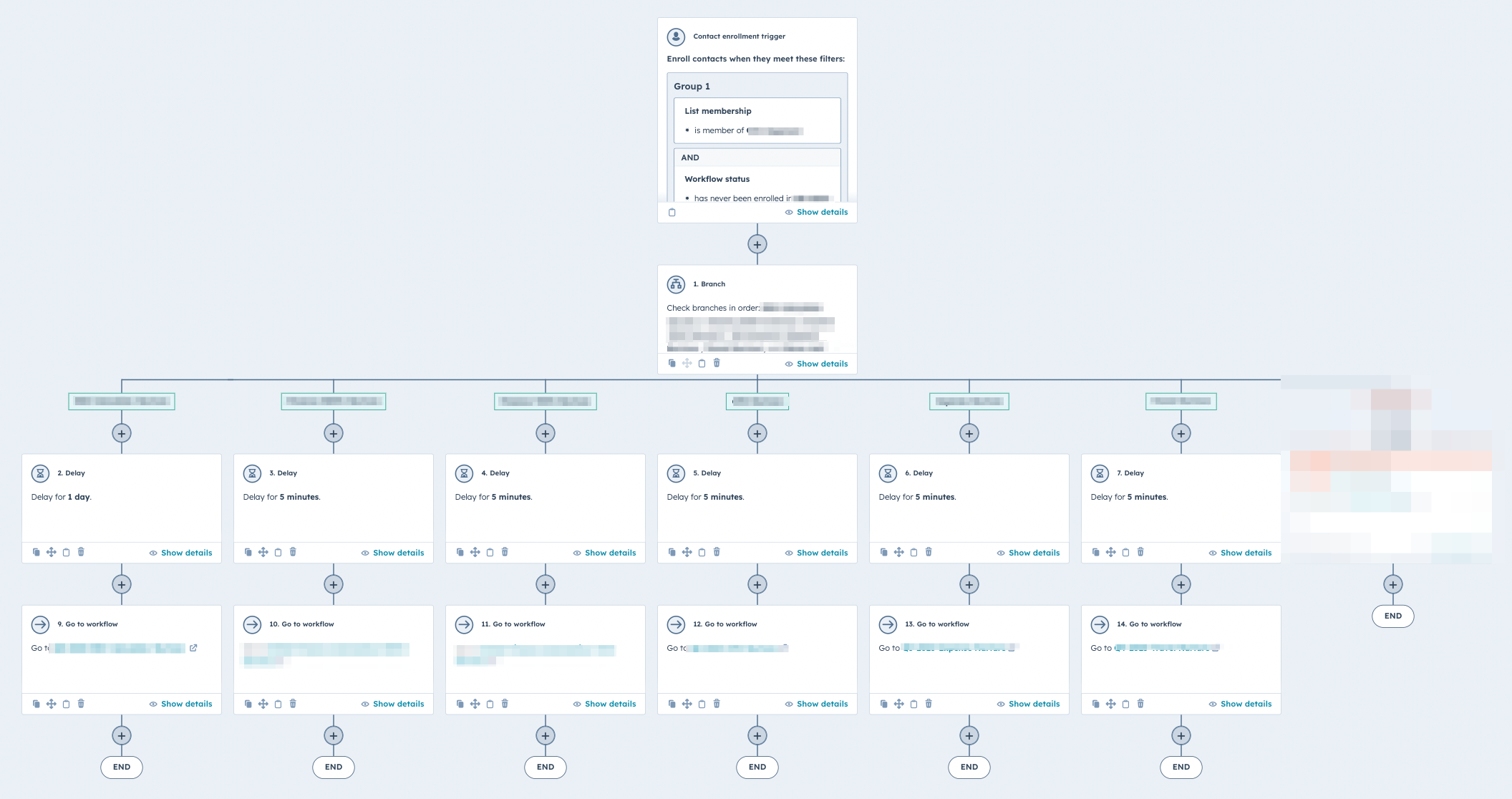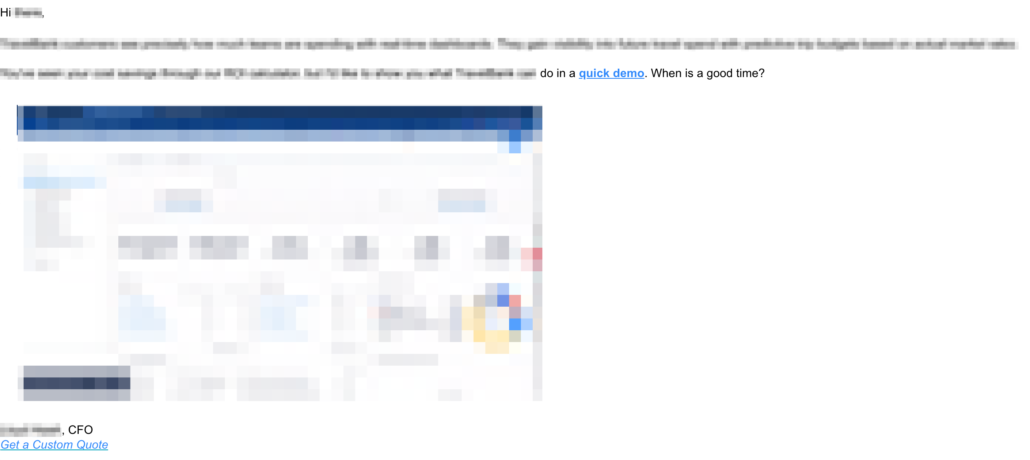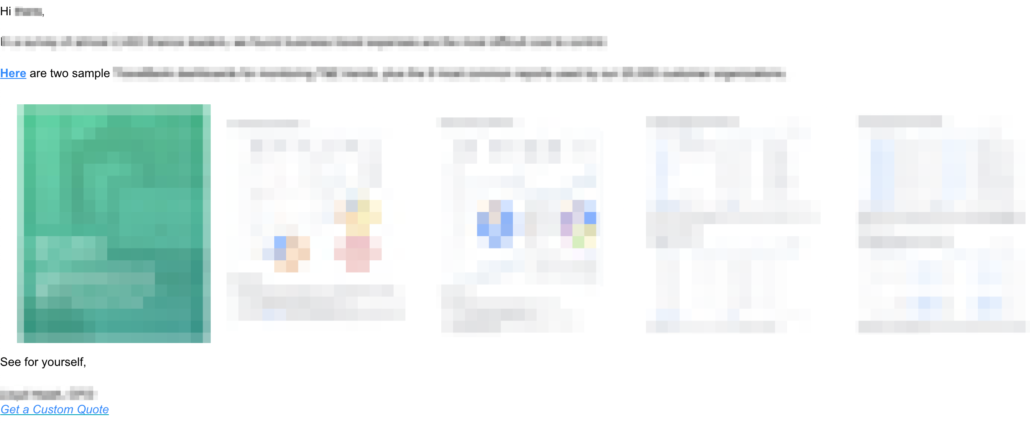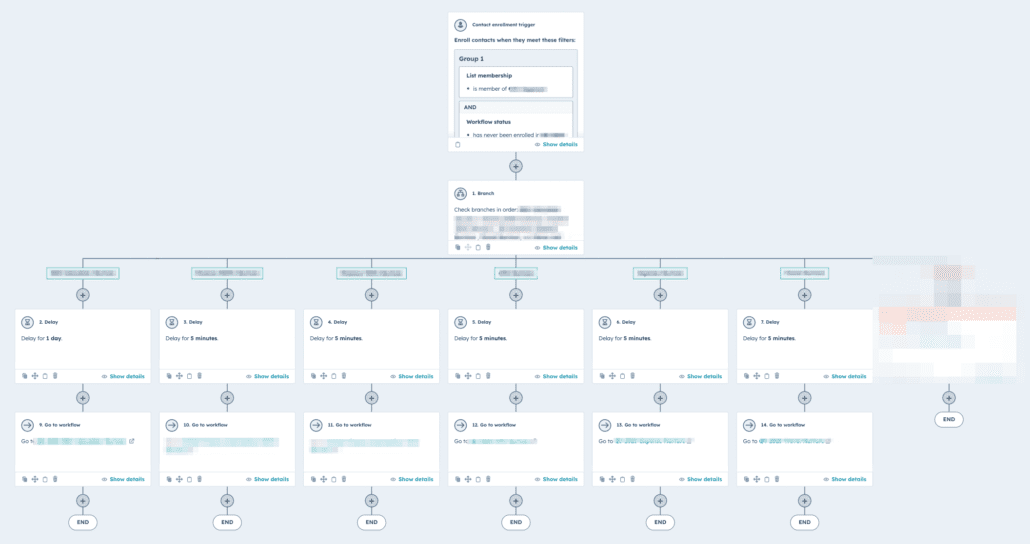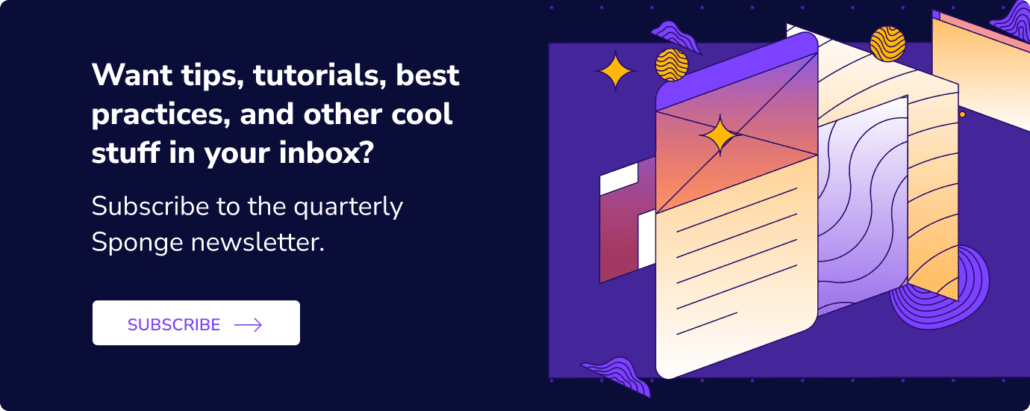Nurture emails are usually a lower priority in the marketing mix. But it’s worth creating an evergreen nurture series that quietly generates opps each quarter for a ~$0 cost-per-acquisition. Here are 8 best practices for nurture email campaigns.
>> Related: How to Reengage Inactive Contacts with Nurture Emails <<
In this post:
1. Broaden the purpose of nurture
Nurture is so much more than squeezing out a couple MQLs. For most companies, nurture and newsletters are the only ways companies talk to their databases. (And databases usually dwarf social followings and organic traffic.) These emails last far longer than “flavor of the week” marketing offers, so make sure they reflect well on your brand.
Nurture is also a cheap and targeted way to do market testing. Which product messages or features are most compelling? Which content formats or topics? Don’t wing it. Pilot the hypotheses first via nurture.
2. Braise don’t broil
Beware a nurture cadence that’s hot and heavy. These aren’t MQLs. Bombarding contacts with two emails a week for four weeks will annoy them. Plus you’ll quickly exhaust your content and just… ghost them.
Instead, slow things down. Take a 2-3 day breather after they qualify. Then consistently send a nurture email every 2-3 weeks for months. (This is obviously for a general nurture. You’d send more often if someone signed up for a free-trial, for example.)
I also don’t pause other emails. Because I’m going low-and-slow, I can include these same folks in my webinar invites or monthly newsletters.
3. Iterate a winning nurture email
A big mistake I see is architecting an elegant nurture program that’s segmented by geo, product, and persona. Fun! …And then shoving 120 crappy emails into said elegant structure. 😬
Instead, you need a high-performing email formula before you complicate the targeting or segmenting. Otherwise, if you scale up with garbage emails, you’ll never go back and optimize them.
But don’t google “good nurture email template”! The best email layout is whichever one suits your database. Brainstorm all the ideas you want to test. Then triage, set them up in a sprint, and review them in 30-60 days. I promise the results will surprise you.
If you’re struggling with A/B test hypotheses, here are some starter ideas:
- Will plain text emails outperform HTML emails?
- Will multiple offers confuse/distract readers and convert fewer leads than a singular CTA?
- What happens when I reference the Last Interesting Moment in the first email’s subject line?
- Does sending “from” Jenny Doe vs. Team Acme make a difference?
- Which personalization tokens make a difference (i.e. firstname, companyname, industry)?
- What days/times convert best?
- Do hyperlinked images/gifs get more or less clicks than text links?
- What types of content are most compelling?
This ended up being the top performing email for one of my clients:
Click to expand
The big takeaways are that it’s plain text, short, and includes a demo preview gif. #lovetoseeit
4. Mix up CTAs
I also recommend sending a mix of “snacks” and “meals.” People learn different ways and are often (always?) on their phones. CTAs should include podcasts, blog posts, reports, calculators, case studies, checklists, videos, handraisers (like free trials), and even themed bundles of content. The goal is engagement. And not many people want to watch a recorded webinar or read a white paper. 🙉
That said, I always tuck a short handraiser CTA under the signature in case someone is ready to talk to Sales.
5. Embrace previews
Imagery – especially gifs – are a great way to boost nurture emails. I don’t mean stock images! I mean screen captures of your product, sneak peeks at the content, or data viz. If you’re offering an on-demand webinar (groan), a gif of smiling talking heads will probably double engagement.
Here is an email promoting a report, with several teaser images of dense data viz, tables, and analysis:
6. Ensure Sales can enroll contacts into nurture
All this work is pretty useless if no one can enroll. Liaise with SOPs and MOPs, and hammer out exactly which fields, dispositions, and automation will recycle contacts into nurture, including MQLs that “aren’t ready”, “aren’t the right person”, or can’t be reached by BDRs.
7. Analyze and improve every quarter
Once built, let nurture run for a quarter, and then review:
- What are the best/worst performing offers?
- Are there findings from the A/B tests that should be widely adopted?
- Were there big engagement swings?
- How many MQLs and Opps have been generated?
- How did nurture perform vs. email blasts or newsletters?
- What’s the unsubscribe rate over time?
- Which email clients are most popular (i.e. Chrome on desktop vs. Gmail)?
Make sure you brief the entire marketing team on what you learn. This kind of market testing will absolutely inform PR, paid advertising, and the kind of content that gets written.
And be sure to refresh the CTAs in your nurture stream. Chances are there are some new things to promote. Use them to replace crappy performers or expand the length of the nurture stream.
8. Layer segments and complexity
Now it’s (finally!) time to layer in segments and complexity. I usually tackle 1-2 segments a quarter. Be sure to decide which segments get precedence when folks qualify for more than one.
Here’s a sample Hubspot workflow for nurture enrollment. I had to build this for a client to accommodate the 6(!) nurtures I built for them last year:

